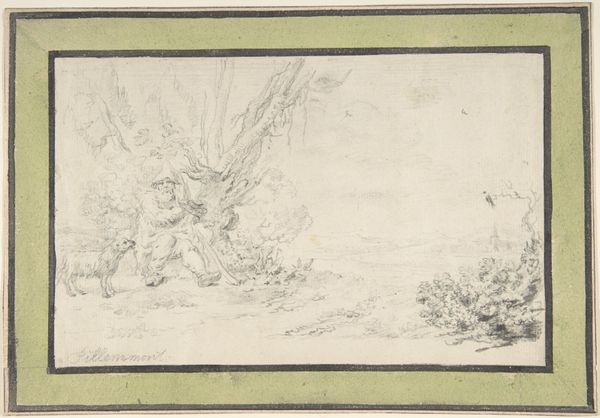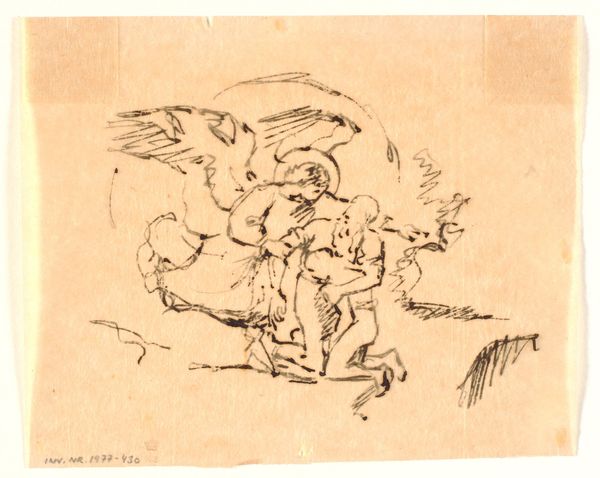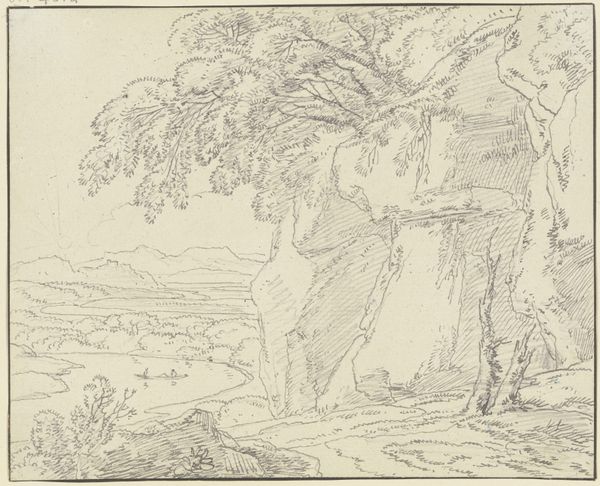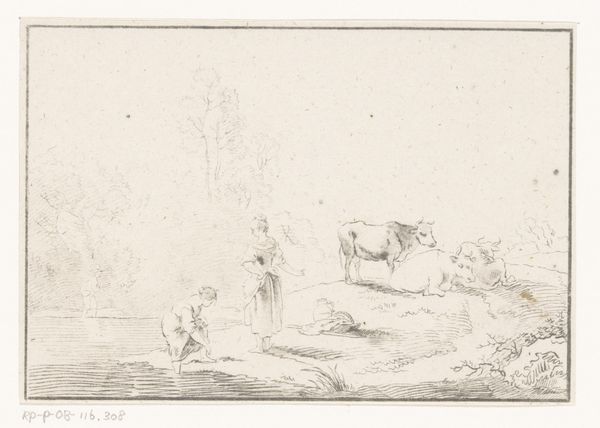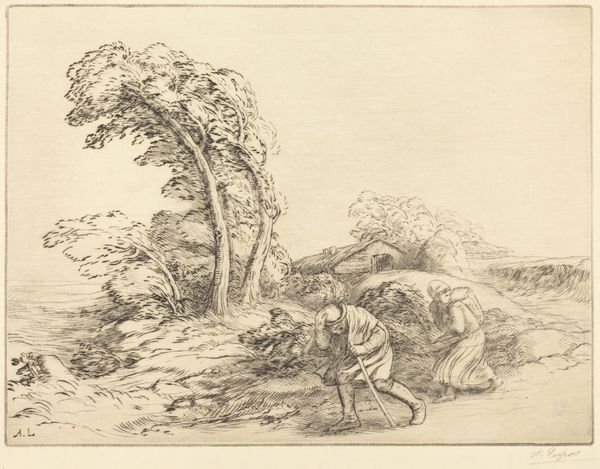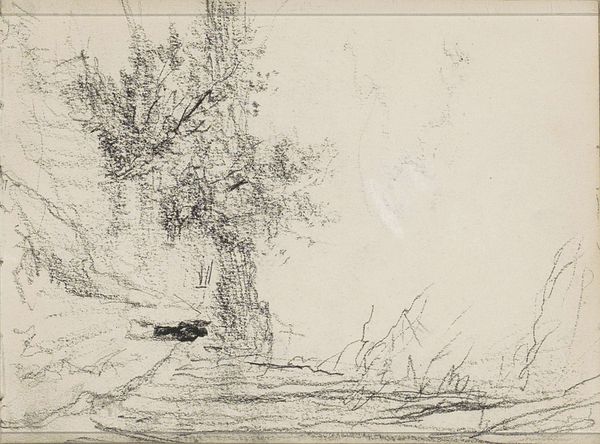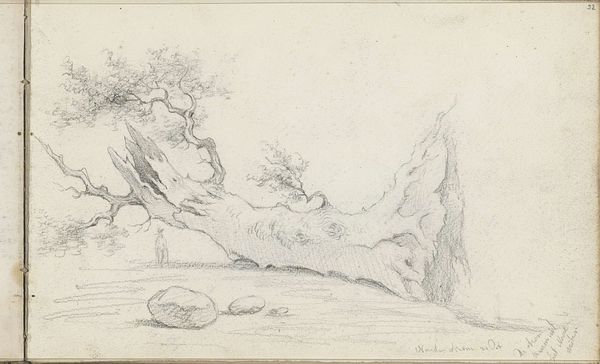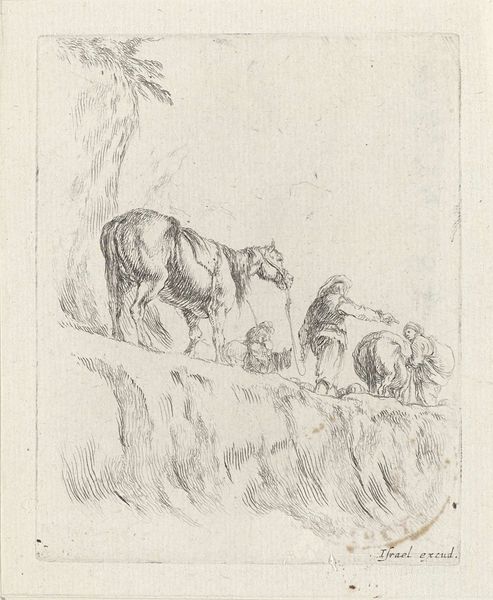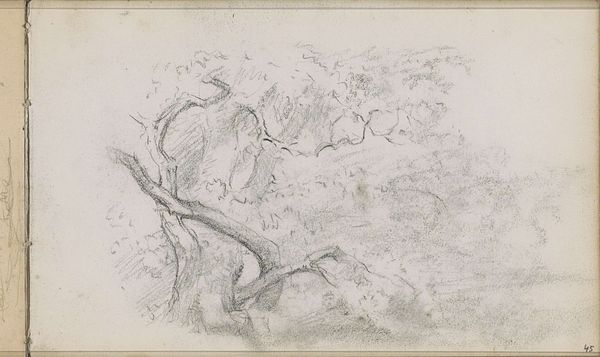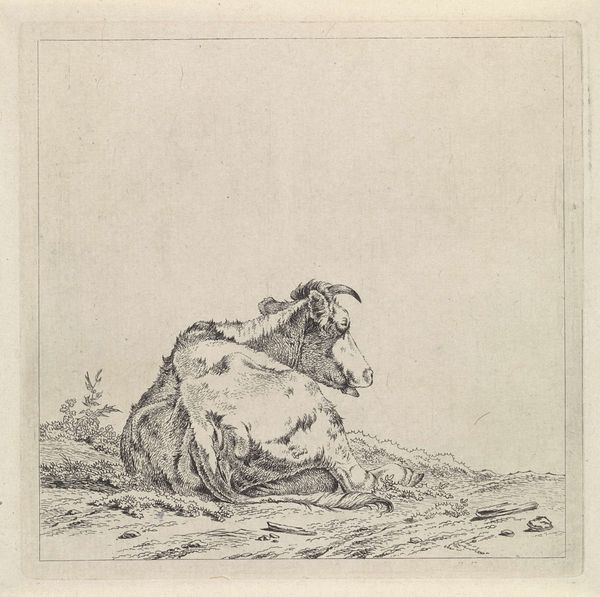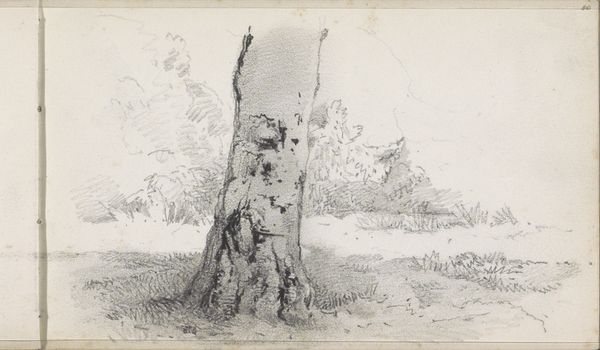
Hercules richt zijn pijl op Nessus die Deïanira ontvoert 1672 - 1747
0:00
0:00
drawing, pencil
#
drawing
#
allegory
#
baroque
#
landscape
#
figuration
#
pencil
#
history-painting
Dimensions: height 195 mm, width 213 mm
Copyright: Rijks Museum: Open Domain
Curator: Here we have Willem van Mieris’s drawing, made with a pencil on paper, sometime between 1672 and 1747. The work, titled “Hercules richt zijn pijl op Nessus die Deïanira ontvoert,” depicts a scene from classical mythology. Editor: My immediate impression is of classical drama, though rendered in a restrained and almost dreamlike palette of blues and grays. The figures, though caught in a moment of intense action, appear subdued, as if frozen in a tableau vivant. Curator: Exactly, the image captures a pivotal scene. The centaur Nessus is running away with Deianira, while Hercules takes aim, about to shoot him with a poisoned arrow. It is a tale of passion, violence, and ultimately, tragedy. Consider how artists for centuries have used it to examine themes of fate and consequence. Editor: The composition is interesting; there's a visual tension created by the arrangement of the three figures, creating a triangular pattern. Hercules is very still, taking aim, while the centaur is in motion and rushing away, bearing the female figure in his arms, as if time is collapsing around the hero. I wonder about the formal relationship to paintings van Mieris may have been referencing. Curator: Myth is the original database, the symbolic system that repeats in art over and over. Notice how van Mieris shows Hercules naked, as was customary in antiquity and the Renaissance; it is a reference to the figure's heroic, god-like status. Nakedness communicates inherent virtue. The imagery, thus, serves as a reference point for continuity across historical moments and artistic forms. Editor: While I acknowledge the references to antiquity, I'm most struck by the drawing's delicate linearity. The fine pencil work gives the piece an airy quality, which tempers the scene's violence. What kind of meaning did "line" have at the time, beyond the simple representation of natural appearances? Curator: I think you’re pointing to the way this drawing embodies the artistic spirit of the Baroque period, which saw many depictions of classical narratives reworked through an ornate and emotional lens. Editor: I find it intriguing to consider how form and iconography coalesce in this scene, prompting consideration of art's intrinsic structure in conveying complex layers of meaning and visual history. Curator: Indeed. It's in this tension between dramatic subject matter and elegant form that we discover Van Mieris' unique contribution to this mythological dialogue.
Comments
No comments
Be the first to comment and join the conversation on the ultimate creative platform.
